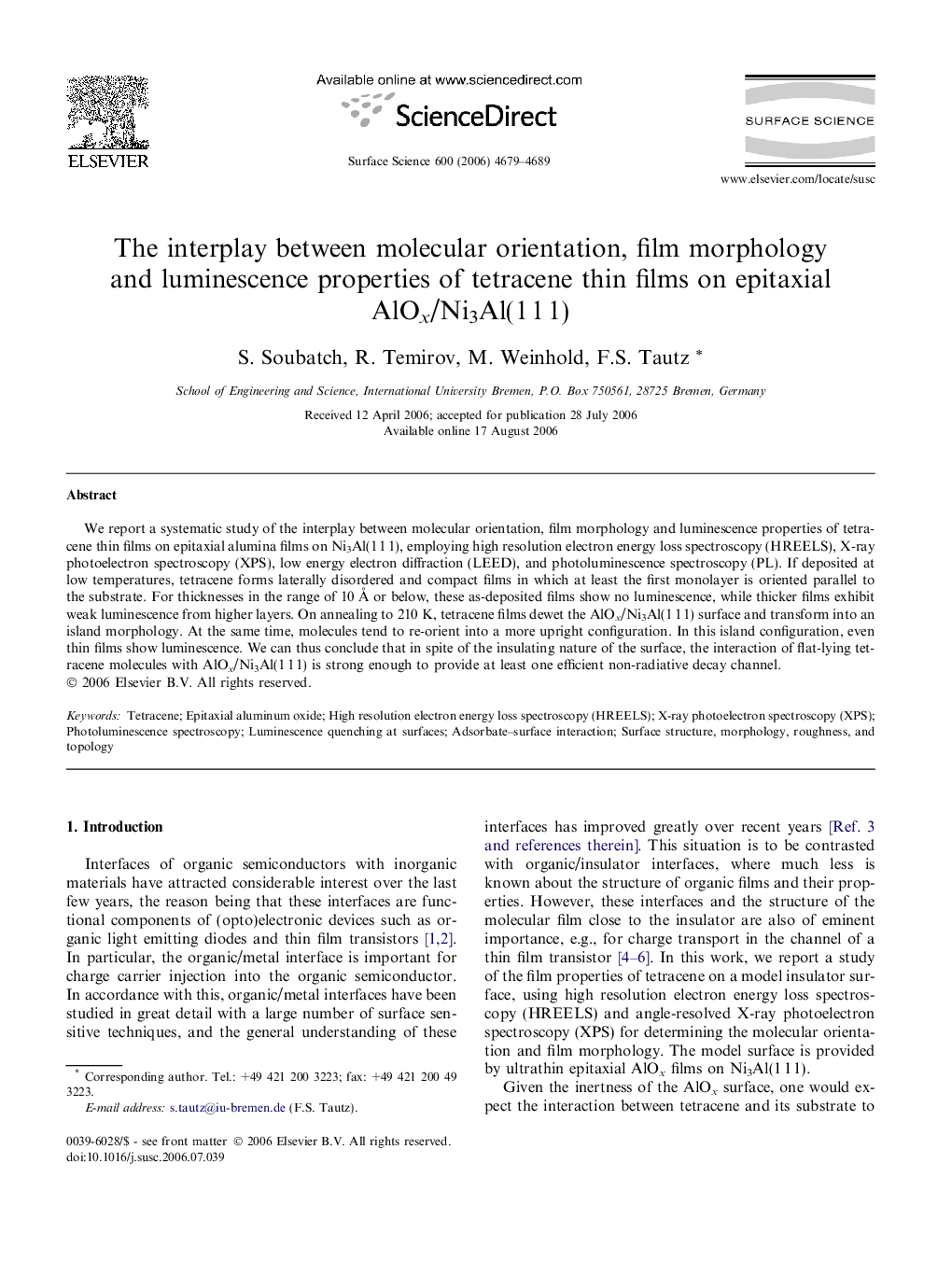| Article ID | Journal | Published Year | Pages | File Type |
|---|---|---|---|---|
| 5426266 | Surface Science | 2006 | 11 Pages |
We report a systematic study of the interplay between molecular orientation, film morphology and luminescence properties of tetracene thin films on epitaxial alumina films on Ni3Al(1Â 1Â 1), employing high resolution electron energy loss spectroscopy (HREELS), X-ray photoelectron spectroscopy (XPS), low energy electron diffraction (LEED), and photoluminescence spectroscopy (PL). If deposited at low temperatures, tetracene forms laterally disordered and compact films in which at least the first monolayer is oriented parallel to the substrate. For thicknesses in the range of 10Â Ã or below, these as-deposited films show no luminescence, while thicker films exhibit weak luminescence from higher layers. On annealing to 210Â K, tetracene films dewet the AlOx/Ni3Al(1Â 1Â 1) surface and transform into an island morphology. At the same time, molecules tend to re-orient into a more upright configuration. In this island configuration, even thin films show luminescence. We can thus conclude that in spite of the insulating nature of the surface, the interaction of flat-lying tetracene molecules with AlOx/Ni3Al(1Â 1Â 1) is strong enough to provide at least one efficient non-radiative decay channel.
